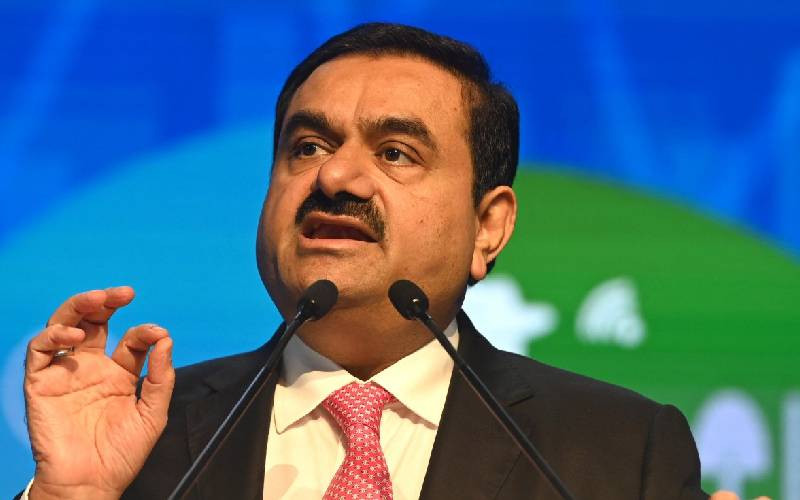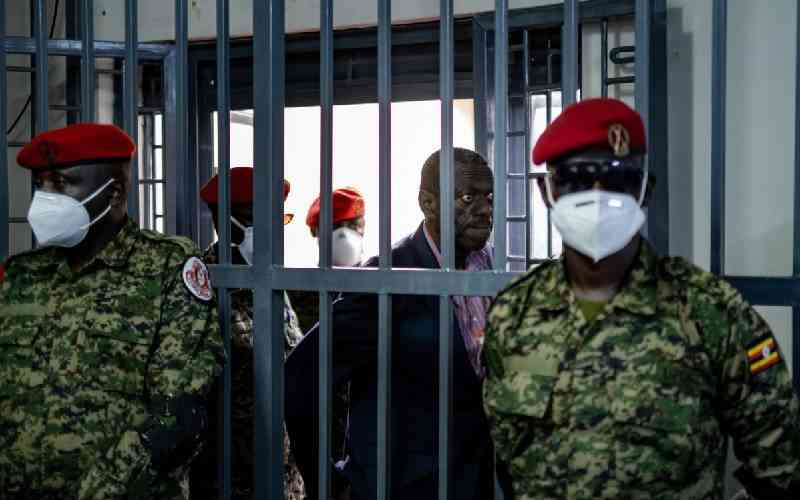During the second week of June, our journey led us to Kenya's Northeastern region. Tasked with reporting on the water availability status, we entered an area often compared to the Sahara, where barrenness, dust, and scorching sun contested for dominance.
Setting out from Nairobi around half past noon, we embarked on a road trip to Timau in Meru County, a water tower located approximately 220 KM Northeast of Nairobi. After a five-hour journey, we reached Kisima village, situated on the Eastern slopes of Mount Kenya and home to the source of River Timau.
The sights that greeted us were a refreshing change - lush flora and green landscapes reminiscent of Kericho's tea plantations. The air was cool and rejuvenating, offering respite from the afternoon heat on the road.

Patrick Mutuma, an MCA representing Kisima Ward in Meru County, elaborated on the water scarcity-induced inter-community conflicts between Meru and Laikipia counties. Downstream residents of Laikipia often blamed the Meru community upstream for obstructing water flow. Instances of upstream obstruction led to downstream retaliation, including destroying intake pumps to restore the flow.
"This river is the sole water source for our area," he said. "It provides water to both upper Meru County and the lower side of Laikipia county."
"During the dry season, conflicts over water frequently arise. People from Laikipia request those in upper Meru to cease their intake pumps for four days to enable downstream access, but the Meru community doesn't always comply," he added.
When defiance occurs, downstream communities take matters into their own hands, damaging pumps to restore the water's natural course. Such confrontations sometimes escalate into physical altercations.
WWF Kenya, a private organization advocating for the protection and conservation of nature and biodiversity, launched a sensitization campaign within the Ewaso Nyiro Basin.
Dr. William Ojwang, the organization's Fresh Water Thematic Lead, spoke to community members at Kisima, emphasizing the need for collective responsibility in safeguarding water resources by protecting catchment areas.
"The journey from catchment to tap is a national endeavor that raises awareness about securing our catchments while considering downstream communities, biodiversity, and investments," he asserted.
"The only way we can effectively manage our water is by uniting like this and recognizing our limited water resources amidst increasing demand. We are all Kenyans. Why do we fight over water? We must come together, comprehend this, and share the resource," Ojwang passionately proclaimed.
Joyce Isiahao, Dr. Ojwang's counterpart and head of partnerships at the organization, echoed the call to protect water towers and preserve the scarce available water. She urged stakeholders from various sectors to unite in this endeavor.
"If we fail to care for the catchment areas, we'll eventually face water scarcity in our taps. This responsibility falls on all of us - the government, the public, and the private sector," she emphasized.
"Kenya is a water-scarce nation. What are you doing to ensure this source doesn't run dry? This is a call to action. Let's safeguard our water resources," she added.
Stay informed. Subscribe to our newsletter
Julius Kirinya, chairman of the National Water Resource Users Associations (RUAs), highlighted the substantial impact of water catchment area destruction on the region's declining water volumes. He stressed that detrimental human activities, such as deforestation, were worsening the situation by exposing water catchment areas.
Proposing a solution, the MCA suggested the construction of a water dam to mitigate future confrontations over water. He believed such a dam could store rainwater that often goes untapped during the rainy season, thus reducing conflicts.
Leaving Kisima behind, we journeyed downstream, tracing the river's path as it provided sustenance to Laikipia and Samburu counties. The river's lazy meandering through the semi-arid landscape presented a stark contrast to its dwindling waters - a result of widespread irrigation practices in the area. The canals crisscrossing the land drained the river, leaving it unable to fulfill its vital role.
This decline impacted not only human communities but also the region's wildlife. Rose Malenya, Assistant Director of the KWS in Laikipia County, lamented the tragic consequences of reduced water levels on wildlife, as reserves like Samburu National Reserve support a plethora of species. The dwindling water supply threatened the survival of elephants, zebras, giraffes, lions, and more.
As we traversed this complex landscape, one truth emerged: the challenge of water scarcity is not confined to Kenya alone; it's a global concern. The National Geographic Society, in collaboration with Utrecht University professors from the Netherlands, launched the World Water Map in March. This geovisualization tool delineates water supply and demand globally and locally, identifying water-scarce areas to spur action and combat further scarcity.
Professor Niko Wanders, a specialist in Hydrological Modeling and physical geography, clarified the map's purpose. It exposes the "water gap" - the disparity between naturally available water and human demand.
"In some parts of the world, these gaps are substantial, leading to hotspots. In these areas, we're depleting water faster than it's naturally replenished, causing groundwater and stream levels to drop over time," he explained.
The map's significance lies in its potential to drive remedial action for a sustainable future. "If we pinpoint water gaps, we can work toward reducing or eliminating them, seeking solutions. These gaps develop gradually, much like climate change. We must raise awareness among people, policymakers, and politicians to address this issue regionally and globally," he asserted.
Prof. Niko highlighted that globally, wells and boreholes are major culprits in over-abstracting groundwater, the world's primary freshwater reservoir. To mitigate this, he called for rigorous borehole regulation by governments worldwide.
 The Standard Group Plc is a
multi-media organization with investments in media platforms spanning newspaper
print operations, television, radio broadcasting, digital and online services. The
Standard Group is recognized as a leading multi-media house in Kenya with a key
influence in matters of national and international interest.
The Standard Group Plc is a
multi-media organization with investments in media platforms spanning newspaper
print operations, television, radio broadcasting, digital and online services. The
Standard Group is recognized as a leading multi-media house in Kenya with a key
influence in matters of national and international interest.
 The Standard Group Plc is a
multi-media organization with investments in media platforms spanning newspaper
print operations, television, radio broadcasting, digital and online services. The
Standard Group is recognized as a leading multi-media house in Kenya with a key
influence in matters of national and international interest.
The Standard Group Plc is a
multi-media organization with investments in media platforms spanning newspaper
print operations, television, radio broadcasting, digital and online services. The
Standard Group is recognized as a leading multi-media house in Kenya with a key
influence in matters of national and international interest.





